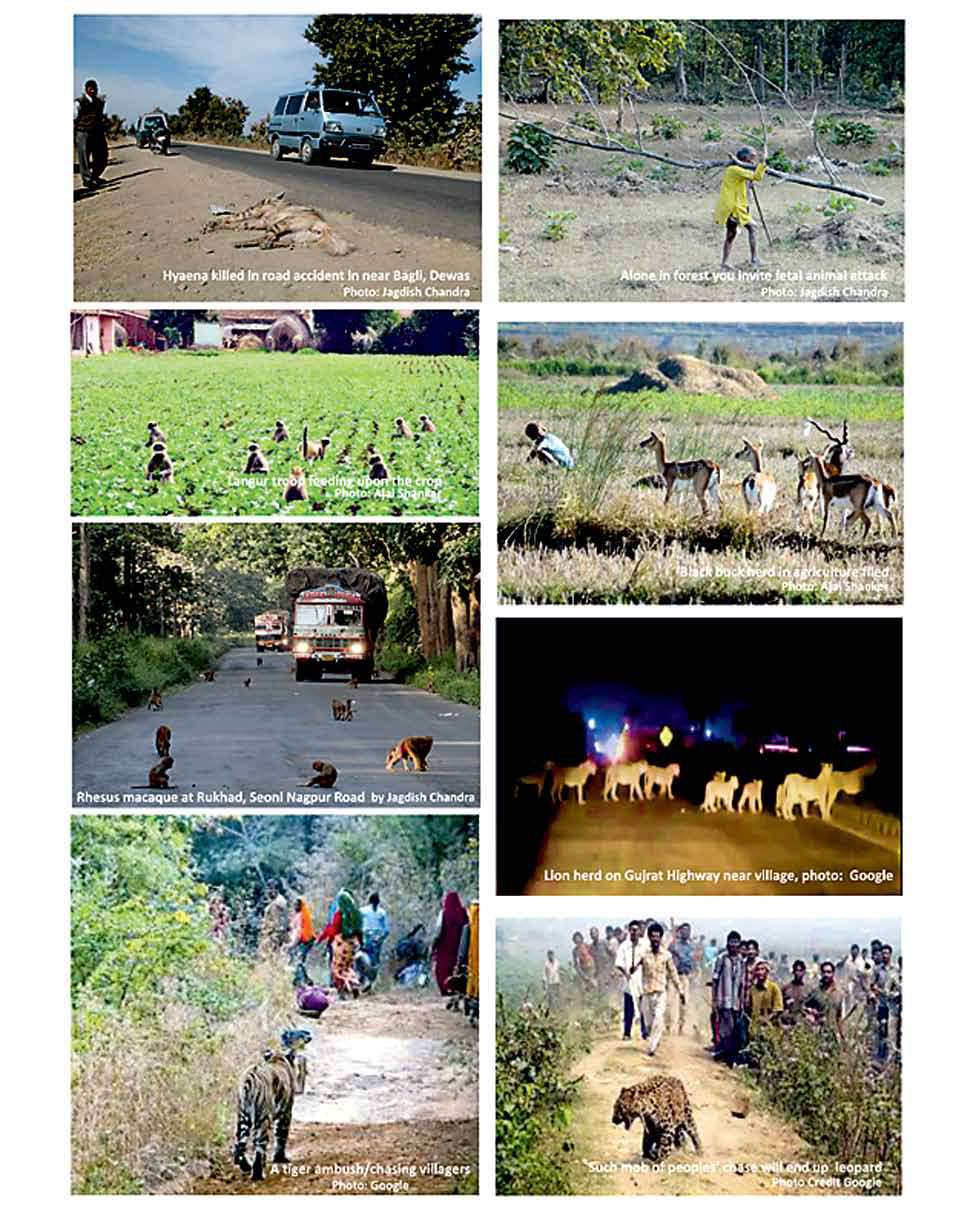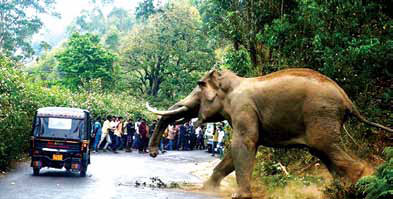Mitigating Human-Wildlife Conflict in The Agrarian Society of India
By Ajai shanker, Jagdish Chandra
The wild animals, using a forest habitat; do not recognise manmade boundaries that are made to zone animals as per human comforts or nomenclature. May we term them as Core Zone, Buffer zone, Sanctum Sanctorum or the Community Reserve etc.
In fact, for them (wildlife), to live upon in a natural forest area (habitat); what they need is food, water and shelter are their basic requirements (and for that matter the same are our needs too). Habitat means a nature’s creation that suits these wild animals to live at or live in the forest.
Hence, technically created names or zones to separate these animals in the name of National Park, Tiger Reserve, Sanctuary etc. cannot stop wild animals to cross those boundaries which you claim are yours (management/administration). This is how the concept of man animal conflict comes in picture and the wildlife managers or the foresters are blamed for this reason.
Wild animals are ought to explore their habitats which belonged to them since time immemorial. In fact, it is we who have encroached into their habitat or niche. And, now the man or people say that wild animals are inflicting into their lively hood? is it really true one has to think for years to find out what is the real truth?
Human-wildlife conflict also termed as man animal conflict, occurs when wild animals requirements encroach on those of human populations, with costs both to residents and wild animals. Especially agrarian community are highly effected by the wild animals who live out side the Protected Areas commonly termed as “buffer zone”.
The wild animals, using a forest habitat; do not recognise manmade boundaries that are made to zone animals as per human comfort or nomenclature. May we term them as Core Zone, Buffer zone, Sanctum Sanctorum or the Community Reserve etc.
In fact, for them (wildlife), to live upon in a natural forest area (habitat); what they need is food, water and shelter are their basic requirements (and for that matter the same are our needs too).
Habitat means a nature’s creation that suits these wild animals to live at or live in the forest.
Hence, technically created names or zones to separate these animals in the name of National Park, Tiger Reserve, Sanctuary etc. can not stop wild animals to cross those boundaries which you claim are yours (management/administration). This is how the concept of man animal conflict comes in picture and the wildlife managers or the foresters are blamed for this reason.
Wild animals are ought to explore their habitats which belonged to them since time immemorial. In fact, it is we who have encroached into their habitat or niche. And, now the man or people say that wild animals are inflicting into their lively hood? Is it really true one has to think for years to find out what is the real truth?
At times, when this threshold is broken it causes damage to crop of the farmers or human injuries as serious as to death. Protected areas are the locations which require staunch animal protection because of their natural, ecological, biological niche or species specific values, which are essential for overall biodiversity conservation. A clearly defined geographical space, recognized, dedicated and managed, through set of Laws and regulations, to achieve the long-term conservation of nature with associated ecosystem services and cultural values.” National Parks & Wildlife, Sanctuaries in India are the protected areas designated for such purposes”.
In India there are as many as 104 National Parks today, and we have over 515 wildlife Sanctuaries, 43 conservation reserves. Where as in the State of MP there are 10 Nps, and 25 Sanctuaries. In near future, Ratapani and Omkareshwer wildlife areas are under the process to be declared as National Parks.
Wildlife-human conflicts are a severe impediment to wildlife conservation and the livelihoods of people India and are becoming more prevalent as human population increases, development expansions is causing global climate change and selfish human activities put people and wildlife on the direct conflict. Mananimal conflicts are causing obstacles in wildlife conservation and the livelihood of people in India is becoming more vulnerable in close vicinity of the Parks & Sanctuaries.
Man-Animal conflict
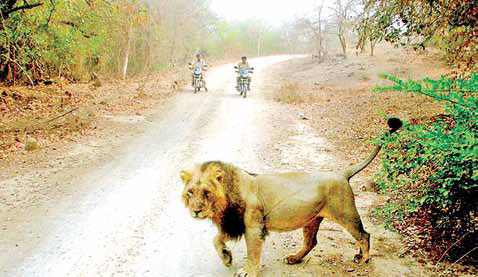
Some examples of Man-Animal conflicts:
- Highway hazzards or Road Kills:- In India road network is expanding with a faster pace, due to the expanding economy and increase in vehicular traffic many roads are either being broadened to ease heavy traffic and many are being expanded through protected areas thereby, roads are becoming a serious threat to wildlife as several wild animals are killed on a daily basis by speeding vehicles. Nocturnal animals like mouse deer, civet, black-napped hare, leopard and sambar are killed. There have been several instances of tiger, elephant calves, chital, dhole, sloth bear, wolf, blackbuck and other large mam mals killed due to road accidents. There are several indirect impacts on animals as a consequence of road accidents.
- Crop damage by the wild animals visa-vis Illegal Grazing in the forest. While the any wild animal feed upon the farmers agriculture field is termed as crop damage. A few animals are Chitals, Nilgai, Wild bores, Elephants, Gaurs, Sambher, Langur or Monkeys etc. But when the village cattle feed upon the jungle flora is termed as cattle grazing. Grazing in the forests leads to man-animal conflict as carnivores are attracted towards the easy prey and become direct enemies of livestock or graziers. When more cattle graze in the forest, resulting in less palatable biomass for wild angulates. As livestock eliminate palatable native plant species often unpalatable species of plants invade the area. The intricate relationship between various species of flora and fauna is yet to be analyzed. Many a time the actual implications of grazing might even go unnoticed, plant species composition skews as foraging by domestic animals increases.
- Cattle grazers are also responsible for human-wildlife conflict, as they often violate the rule of Laws graze cattle in the
PAs. In return these cattle transmit several contagious diseases prevailing in them, a few of these are FMD, Rabies etc. Specially when any carnivore kill such cattle to fulfill its food demand. Not only has that predator got Infested with the disease but, also Park managers have to compensate a heavy value of the cattle to the cattle owner that means double loss.
- Increase in Human population: The pressure of increasing human population is not hidden from any one. Thus, increased demands in requirements of people have tempted them to move much deeper in the forest areas. These settlements from urban and rural to meet the pace of growing populations led the villagers to encroach upon the forest lands.
- Changing in the land use pattern around the PAs…. In past 2-3 decades (to be more specific; after the inception of the National Parks, Tiger Reserves or Wildlife Sanctuaries), thousands of human settlements have come up around the PAs. Increasing in human populations, shrinkage of forest, change in the raising of crop pattern etc. are also causes of man animal conflict. Much alarming situation is mushroom pattern construction of concrete structures around the PAs (violating the norms of eco-tourism policies & guidelines), in the form of hotels & resorts are not only a serious threat to the wild animals but, also the cultural diversity of the locals is being changed.
This fast emerging reason of man-animal conflicts, no doubts, provide labor man days and jobs to hand full of villages residing near the Pas but, the turnover of money earned by the owners (hotels/ resorts owners), highly debatable and questionable.
Land use transformations –
Conversion from agriculture to business module development of agricultural and horticultural lands and clearing the areas, for plantations or other developmental activities – The construction of hydroelectric projects results in the submergence of nearby forest lands. The clearance of lands for mining and industries also leads to breaking of large natural habitats into small patches.
Habitat fragmentation & Corridor Linkage break down –
All the aforesaid reasons contribute to `fragmentation’ of large habitats and shrinking sizes of forest patches but, also is major cause of breaking the ‘animal corridor linkages’. This makes that landscape unviable for wild animals as their needs are not fulfilled. As a result of which they wander in nearby areas searching for food, water or shelter thus encounter with conflict. In case attack from wild animals like tiger and leopard, the village people also lose their precious cattle like cow, sheep, goat, etc.
Abundance of wild animals in various protected areas of India and the tiger being the home land, attack on human or cattle by the tiger, leopards, Sloth bear, Elephants etc. are major causes that perpetuate into man-animal conflict. Before the inception of Wildlife (protection) Act, 1972, India had only five national parks and 22 wildlife sanctuaries. Later, our conservationists lobby and the State Governments thought it need of the time to conserve & protect our wildlife hence were involved in declaring more national parks and sanctuaries. Today in India there are as many as 104 National Parks today it and has over 515 wildlife Sanctuaries.
Whereas, in the State of MP there are 10 Nps, and 25 Sanctuaries. Hence, it is evident that after the inception of various Laws pertaining to the forest & wildlife protection and staunch protection of wildlife in and around the forest and in the PAs have led sustainable increment in the animal population. However, in the past few decades, increase in human populations, shrinkage of forest areas, change in the raising of crop pattern. And, in past few decades, much alarming mushroom pattern construction of concrete structures (violating the norms of eco-tourism policies & guidelines), the hotels & resorts around National Parks & Sanctuaries are not only serious threat to the wild animals but, this also is emerging as one of the reasons of man-animal conflicts.
According to Wild Life Protection Act chapter III section 11. Hunting of wild animals to be permitted in certain cases. as explained that (a) the Chief Wild Life Warden may, if he is satisfied that any wild animal specified in Schedule I has become dangerous to human life or is so disabled or diseased as to be beyond recovery, by order in writing and stating the reasons therefore, permit any person to hunt such animal or cause such animal to be hunted(b) the Chief Wild Life Warden or the authorized officer may, if he is satisfied that any wild animal specified in Schedule II, Schedule III, or Schedule IV has become dangerous to human life or to property (including standing crops on any land), or is so disabled or diseased as to be beyond recovery, by order in writing and stating the reasons therefore, permit any person to hunt such animal or cause such animal to be hunted.
The killing or wounding in good faith of any wild animal in defense of oneself or any other person shall not be an offence provided that nothing in this sub-section shall exonerate any person who, when such defense becomes necessary, was committing any act in contravention of any provisions of this Act or any rule or order made there under and Any wild animal killed or wounded in defense of any person shall be Government property.
Possible Strategies to mitigate mananimal conflicts –
Human-Wildlife Conflict may be lethal, control of animal population, translocation, and regulation of animal population’s size. Land use planning and understanding of ecological and ethological understanding of the wildlife and its environment to prevent or minimize conflict examples being behavioral modification and measures to reduce interaction between humans and wildlife. Eco-development in the PAs, Joint forest committee in the forest areas are active in the forest department.
There are a number of management practices are prevailing to reduce mananimal conflicts in such areas can be provided with cattle proof stone wall or trench on the boundary of PA. Power Pulls Correct fencing, Chain link fencing, fencing or Brushwood fencing, to protect the agriculture crops caused by wild animals.
Timely payment of compensation to the concerned villagers for crop damage caused by the wildlife. The investigation and assessment of crop damage is done by the Revenue Department. The concerned Divisional Forest Officer makes the payment.
Timely payment of compensation for different losses incurred done by the wild animals.
Timely payments of compensation to the legal hire in case of human death caused Carnivora (In MP a compensation of Rs. 4,00,000 is paid to the successor of the deceased person). To facilitate expeditious payment of compensation in case of loss of human We to people Range Officers is authorized to investigate and make payment within afixed time frame. Immediate payments for medical treatment to the injured ones caused by wild animals. (An assistance up to Rs 20,000 is paid towards treatment). In case of permanent disability, compensation up to Rs. 75,000 is paid to the injured person, in addition to the expenses incurred on medical treatment.
Regular patrolling by the staff in vulnerable areas, along the rivers, nalah, including the village boundaries adjoining to the forest for alertness generation. Compensation for crop damage caused by wild animals the aggrieved person should inform the nearest revenue officer within 24 hours about the damage to the crop by wild animal.
References:
- Wild life Protection Act, 1972htq xllenvfornic. in/legis/ wildlife/ wildlife1 .html
- Current Conservation Special: Wildlife-Human Conflict 2010 Volume 4 Issue 4
- Manitoba Agricultural Services Corporation http://www.masc.mb.ca/masc.nsf/program_wildlife_damage_compensation.html
- Elsevier Biological Conservation 166(2013)175- 185 Journal Patterns of human-wildlife conflicts and Compensation: Insights from Western Ghats protected areas yera 2013 by Krithi K Karanth, Arjun M Goplaswamy, Parvathi K. Prasad, Shreya Dasgupta
- Ministry of Environment & Forest Govt. of India Protected Area Network http://envfornic.in/publicinformation/protected-area-network
- Elsevier Biological Conservation 157(2013)309-316 Journal The hidden dimensions of human-wildlife conflict: Health impact, opportunity and transaction cost. Year 2012 by Maan Barua, Shonil A. Bhagwat, Sushrut Jadhav
- Wildlife Compensation guidelines, Govt of Andhra Pradesh htq 3:/forest.ap.nic.in/WL%20Compensation%20Guidelines.htm
- Guidelines For Human -Leopard Conflict Management, April 2011 By Ministry of Environment & Forest, Govt. of lndia Ecology of Aquatic Animals in National Chamal Sanctuary, Morena, MP Published in ME & MY EARTH’ Year-1, Issue-3 Pages 38- 44, April-June 2107. Jagdish Chandra
- Minutes Of The Brainstorming Session On Management Of Blue Bulls Held On 17-12-2009 At Krishi Bhavan New Delhi Under The Chairmanship Of Agriculture Commissioner Ministry OfAgriculure Goi
- Human-Wildlife Conflicts (HWC)- Possible management practices so far used minimizing such conflicts-India htq x//www.teriuniversity.ac.in/mct/ pdf/Wildlife_&_Biodiversity _Conservation_Module/Human_Wildlife_Conflict_Challenges_and_Management.pdf

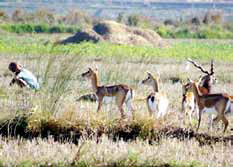
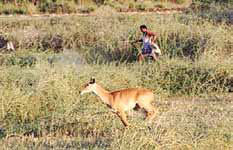 PAs. In return these cattle transmit several contagious diseases prevailing in them, a few of these are FMD, Rabies etc. Specially when any carnivore kill such cattle to fulfill its food demand. Not only has that predator got Infested with the disease but, also Park managers have to compensate a heavy value of the cattle to the cattle owner that means double loss.
PAs. In return these cattle transmit several contagious diseases prevailing in them, a few of these are FMD, Rabies etc. Specially when any carnivore kill such cattle to fulfill its food demand. Not only has that predator got Infested with the disease but, also Park managers have to compensate a heavy value of the cattle to the cattle owner that means double loss.